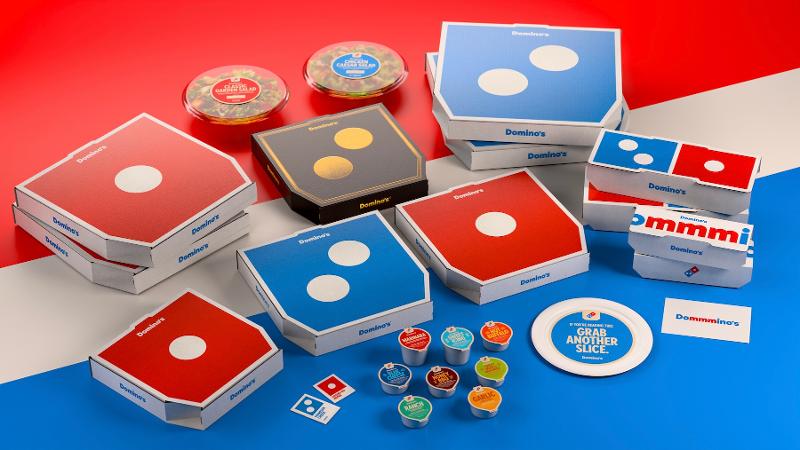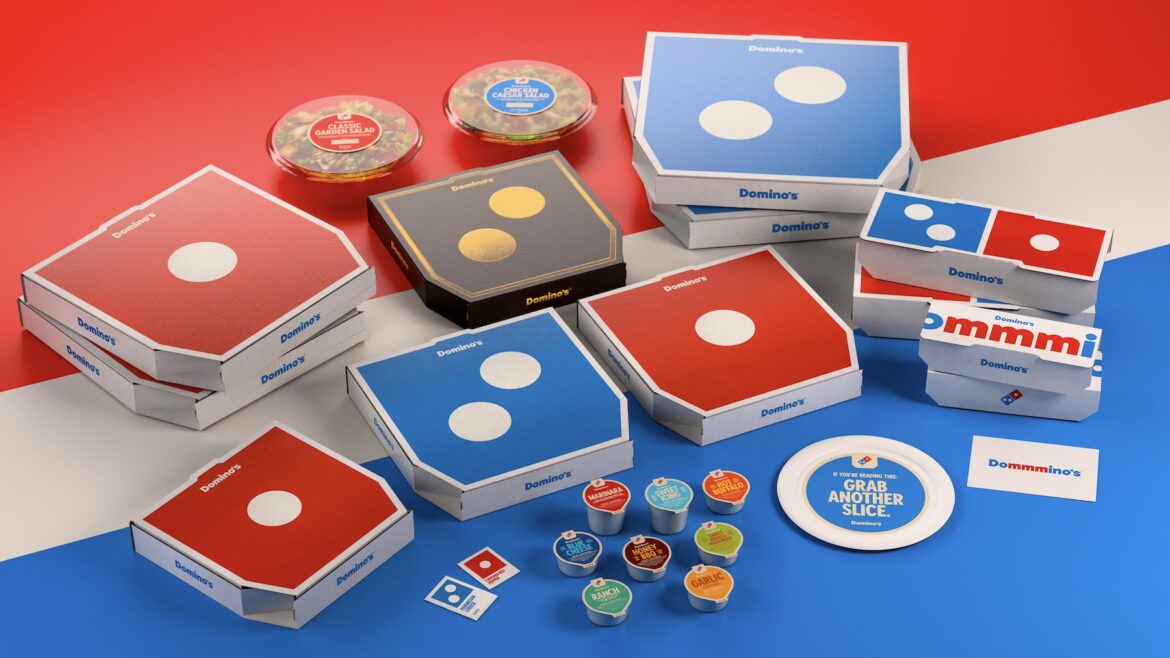
Domino’s followed a brand refresh with a report showing stronger-than-expected sales. | Photo courtesy of Domino’s Pizza.
Don’t look now, but Domino’s is hot again.
The Ann Arbor, Michigan-based pizza chain just reported a 5.2% increase in same-store sales in the third quarter. The company has used an effective value offer and a new stuffed-crust pizza—and a newfound appreciation for online aggregators—to generate a healthy result.
While that might not sound all that impressive in an era when chains like Chili’s are putting up 20-plus numbers on a routine basis, for the pizza business—and the fast-food business as a whole—it is positively stratospheric. Coming off a widely lauded brand refresh, the results highlight just why Domino’s has taken over the pizza business.
Since the company’s sales slump in 2021 and 2022, a slump largely driven by a brutal driver shortage, Domino’s has generated positive same-store sales in 13 of 15 quarters. That, in the process, has tightened its grip on the fast-food pizza market.
Domino’s only surpassed Pizza Hut to become the largest pizza chain in the U.S. by system sales in 2017. By 2019 it was 27% larger than its longtime rival. Today, Domino’s is almost as big as Pizza Hut and Little Caesars, the second and third-largest pizza chains, combined.
In 2019, Domino’s accounted for 26% of the fast-food pizza market, according to Technomic Top 1,500 data. By last year, it accounted for 30% of that market. The company’s share of sales from the 10 largest pizza chains has also jumped, from 32% to 36%.
It has largely taken this share from Pizza Hut, which has struggled for years with weak sales and shuttering locations, along with smaller chains.
To be sure, Domino’s dominance pales in comparison to McDonald’s share of the fast-food burger market (more than 50%) or the utter ridiculous dominance Taco Bell has of the quick-service Mexican market (88%, and that is not a typo).
But it is a lot in a pizza market that has long been flush with competitors.
Domino’s used a decade-long run of same-store sales growth to become the largest pizza chain in the world, using a model that made it remarkably easy to order a pizza. The company has over the past two years shifted into a strategy focused on marketing the quality of its pizzas while finding new and unique ways to offer value to consumers, both through innovative deals like Emergency Pizza or Carryout Tips or its reconfigured loyalty program. It also made nice with third-party aggregators and started offering more innovative products like stuffed-crust pizzas.
All this appears to be working. While Domino’s was the first pizza chain to report earnings this period, its performance has solidified its position, enabling it to gain “meaningful” share of the market. “Our carryout business was positive. Our delivery business was positive, and our order count was positive,” CEO Russell Weiner told analysts. “All of this has resulted in meaningful market share growth.”
The company is using that market share to its advantage. Domino’s is a franchise, so as it grows, its franchisees’ contribution to the marketing fund grows with it. That gives the company more funds to keep pushing its pizzas on the consumer, which only furthers market share growth.
That, plus the fact that it’s so big, means it can get better deals on supplies. That enabled the company to offer a $9.99 any-pizza deal, the “Best Deal Ever,” in a way that is profitable for operators—who pushed to extend the offer.
“Because of the scale of our media and purchasing power, Domino’s can drive the volume it takes to make a great deal like this profitable for franchisees,” Weiner said.
None of this guarantees that Domino’s will keep this momentum forever. But the company has successfully navigated its worst sales crisis since the Great Recession and has gone back to the business of pizza domination.
Members help make our journalism possible. Become a Restaurant Business member today and unlock exclusive benefits, including unlimited access to all of our content. Sign up here.
Restaurant Business Editor-in-Chief Jonathan Maze is a longtime industry journalist who writes about restaurant finance, mergers and acquisitions and the economy, with a particular focus on quick-service restaurants.
View All Articles by This Author


Dining and Cooking